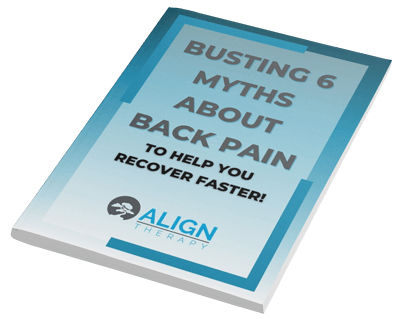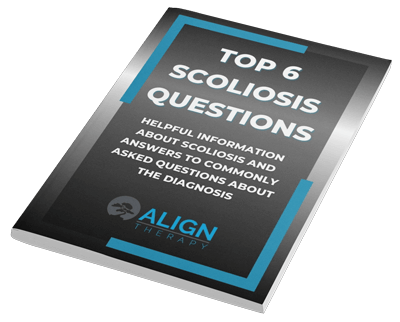As winter blankets the world in frost and cold, it brings with it a familiar companion for many: joint pain. The connection between cold weather and joint discomfort is a topic that merits exploration, as understanding this relationship can empower individuals to better manage and mitigate the discomfort they experience. In this comprehensive blog post, we will unravel the intricate connections between cold weather and joint pain while offering practical insights and solutions. Our aim is to provide you with a holistic understanding of the issue, alongside a heartfelt call to action for our clinic’s specialized care.
The Cold Truth About Joint Pain
The cold truth about joint pain lies in its intricate connection to weather, particularly as winter’s chill envelops us. This relationship merits a closer examination as it profoundly influences the lives of countless individuals. When temperatures drop, joint tissues tend to constrict, leading to stiffness and discomfort. For those with pre-existing joint issues like osteoarthritis or rheumatoid arthritis, these symptoms can intensify in colder climates, leaving individuals grappling with reduced mobility and an increased sense of physical vulnerability. Moreover, the seasonal shift discourages outdoor activities and exercise, resulting in reduced movement that weakens muscles and joints, making them more susceptible to pain and discomfort. Changes in atmospheric pressure, especially prior to or during precipitation, can further impact joint fluid, potentially leading to pain. The onset of cold weather often coincides with a decline in sunlight exposure, causing vitamin D deficiency, a critical component of bone and joint health. Additionally, the allure of comforting but inflammatory-rich winter diets can exacerbate joint pain. This cold truth about joint pain exposes the physical and emotional challenges it presents. However, understanding this connection is the first step towards proactive management, warmth, and relief for those seeking to reclaim their quality of life even in the coldest of seasons.
Finding Relief from Cold – Weather Joint Pain
To address these concerns effectively, consider the following solutions:
Keep Warm: Dressing in layers and using heating pads or warm baths can help maintain body temperature and soothe aching joints. Don’t forget to cover extremities like hands and feet, as they are especially vulnerable to cold-induced pain.
Stay Active: Engaging in indoor exercise routines or taking short walks can keep your joints moving and help prevent stiffness. Gentle stretching exercises can also be beneficial.
Maintain a Healthy Diet: Prioritize an anti-inflammatory diet rich in foods like fatty fish (which contain omega-3 fatty acids), fruits, vegetables, and foods high in antioxidants. Ensuring adequate vitamin D intake through diet or supplements is also essential, especially during the winter months.
Consult a Specialist: If joint pain persists or worsens in cold weather, it’s advisable to seek professional help. A skilled physical therapist can develop a personalized plan tailored to your specific needs, incorporating exercises and techniques to alleviate discomfort.
Holistic Approaches: Exploring alternative therapies such as acupuncture, massage, or yoga can provide additional relief and contribute to overall well-being. These holistic approaches can address not only the physical aspects of joint pain but also the emotional toll it may take.
Types of Joint Pain – Spectrum of Discomfort
It’s important to note that joint pain isn’t a one-size-fits-all condition; it manifests in various ways:
Arthritis: This chronic condition encompasses various forms such as osteoarthritis, rheumatoid arthritis, and psoriatic arthritis. Arthritis often leads to joint inflammation, stiffness, and reduced range of motion.
Tendonitis: Tendons, which connect muscles to bones, can become inflamed, resulting in tenderness and pain around the affected joint.
Bursitis: Bursae are small, fluid-filled sacs that cushion joints. Inflammation of these sacs can lead to bursitis, characterized by localized pain and swelling.
Gout: Gout is a type of arthritis caused by the buildup of uric acid crystals in joints, particularly in the big toe. It causes intense, sudden pain and swelling.
Frozen Shoulder: Also known as adhesive capsulitis, this condition causes pain and stiffness in the shoulder joint, making it difficult to move the arm.
Common Concerns About Cold Weather and Joint Pain
Many individuals grappling with cold weather and joint pain harbor specific concerns, each adding to the weight of this seasonal challenge. Foremost among these concerns is the heightened pain experienced during colder months, leaving many worried about reduced mobility and overall comfort. The natural tendency to retreat indoors as temperatures drop can lead to a decline in physical activity, further exacerbating joint pain and stiffness, a disheartening reality for those who cherish an active lifestyle. However, it’s not only the physical strain; sustained joint pain can exact a toll on emotional well-being, often contributing to feelings of depression and anxiety, making the winter season emotionally taxing. Additionally, there is a legitimate concern about increased reliance on pain medication during winter, with apprehensions about potential side effects or the potential for dependency. These concerns encapsulate the complex relationship between cold weather and joint pain, underlining the need for proactive strategies and support systems to navigate this seasonal challenge effectively.
Best Solutions for Cold Weather and Joint Pain
Effective management of cold-weather joint pain involves a multifaceted approach. It begins with consulting a healthcare professional to assess and potentially adjust your medication regimen, ensuring its ongoing effectiveness and safety. Engaging in a tailored physical therapy program designed for your specific condition can significantly alleviate pain, improve joint function, and enhance overall mobility. Adopting a proactive lifestyle approach includes maintaining a balanced, anti-inflammatory diet, staying physically active indoors, and integrating heat therapy to relieve discomfort. Complementary holistic therapies, such as acupuncture, massage, or yoga, not only provide physical relief but also support emotional well-being, addressing both the physical and emotional aspects of joint pain. Acknowledging the importance of mental health, seeking support from friends, family, or therapists is crucial in coping with the emotional impact of chronic pain. Finally, regular check-ups with your healthcare provider help monitor your joint health, track your progress, and make necessary adjustments to your treatment plan, ensuring comprehensive care and a better quality of life even in colder seasons.
Understanding the complex relationship between cold weather and joint pain empowers you to take proactive steps in managing your discomfort. By addressing concerns, exploring suitable treatments, and making lifestyle adjustments, you can maintain a better quality of life even in the coldest of seasons. For personalized care and support, consider reaching out to Align Therapy Clinic, Utah, where we specialize in addressing joint pain and enhancing your quality of life. Call us at 801-980-0860 to take the first step towards a pain-free, active life. The warmth of our care awaits you, and we’re committed to helping you regain control of your health and well-being.



